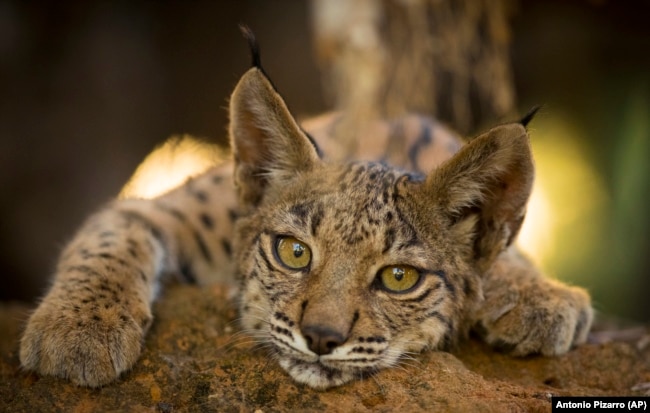AUDIO
Wild Cat Is Back from Near Extinction

A species of wild cat in Europe that was almost extinct, or about to disappear, over 20 years ago has returned.
Last week, the International Union for Conservation of Nature (IUCN) declared that the Iberian lynx is no longer an endangered species. Native to Spain and Portugal, the wild cats are medium-sized with different shades of brown. They have pointed ears and facial hair that looks like a beard.
In 2001, there were only 62 adult Iberian lynx. The low numbers led to emergency efforts to save the animals. Experts then helped bring males and females together for reproduction and started protection projects. Other efforts included restoring their natural environments, including dense forests and grasslands.
By 2023, the IUCN said its latest count shows more than 2,000 wild cats, including adults and younger ones.
“It’s really (a) huge success, an exponential increase in the population size,” Craig Hilton-Taylor told The Associated Press. He is head of the IUCN Red List. The Red List maintains information on animals and plants that face the risk of extinction.
The Iberian lynx’s disappearance was closely linked to that of its main food source the European rabbit. Other reasons are damage to its habitats and human activity.

One of the keys to their recovery has been the attention given to the rabbit population. The rabbits had been affected by changes in agricultural production. And their recovery has led to a continuous increase in the lynx population, Hilton-Taylor said.
Francisco Javier Salcedo Ortiz is with the European Union’s LIFE Lynx-Connect project.
He called it “the greatest recovery of a cat species ever achieved through conservation.” Ortiz said it was the result of partnerships among public bodies, scientific communities, non-profit organizations, businesses, and people, like local landowners, farmers, gamekeepers and hunters.
IUCN has also worked with local communities to teach people about the importance of the Iberian lynx in nature. This has helped to reduce animal deaths due to accidents or illegal hunting. In addition, Hilton-Taylor said, farmers receive money if a lynx kills any of their animals.
Since 2010, more than 400 Iberian lynx have been reintroduced to parts of Portugal and Spain. Now, their habitat includes at least 3,320 square kilometers. This is an increase from 449 square kilometers in 2005.
“We have to consider every single thing before releasing a lynx, and every four years or so we revise the protocols,” said Ramón Pérez de Ayala. He is the World Wildlife Fund’s Spain species project manager. WWF is one of the organizations involved in the project.
While the latest Red List update offers hope for other species in the same situation, Hilton-Taylor warns that the lynx is not out of danger just yet. The biggest uncertainty is what will happen to rabbits. They are often affected by viruses and other diseases.
Hilton-Taylor said, “We also worried about issues with climate change, how the habitat will respond to climate change, especially the increasing impact of fires, as we’ve seen in the Mediterranean in the last year or two.”
______________________________________________
Words in This Story
species – n. a class of individuals having common attributes and designated by a common name
extinct – v. no longer existing
medium-sized – adj. neither large nor small
exponential – adj. characterized by or being an extremely rapid increase (as in size or extent)
habitat – n. the place or environment where a plant or animal naturally or normally lives and grows
key – n. something that provides an explanation, solution, or means of identifying
protocol – n. a detailed plan of a scientific or medical experiment, treatment, or procedure
impact – v. to have a strong effect on
https://learningenglish.voanews.com/a/wild-cat-is-back-from-near-extinction/7668574.html